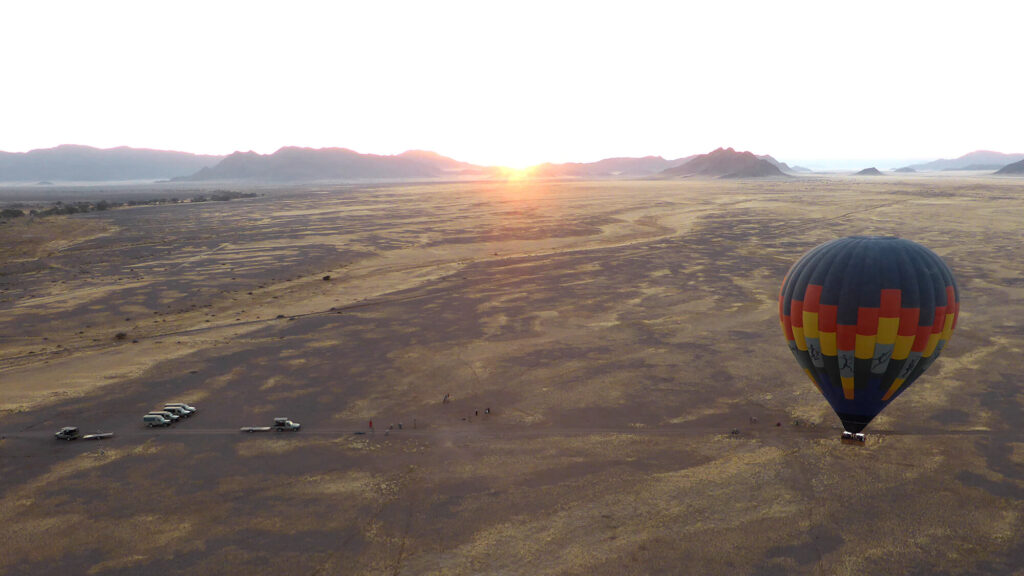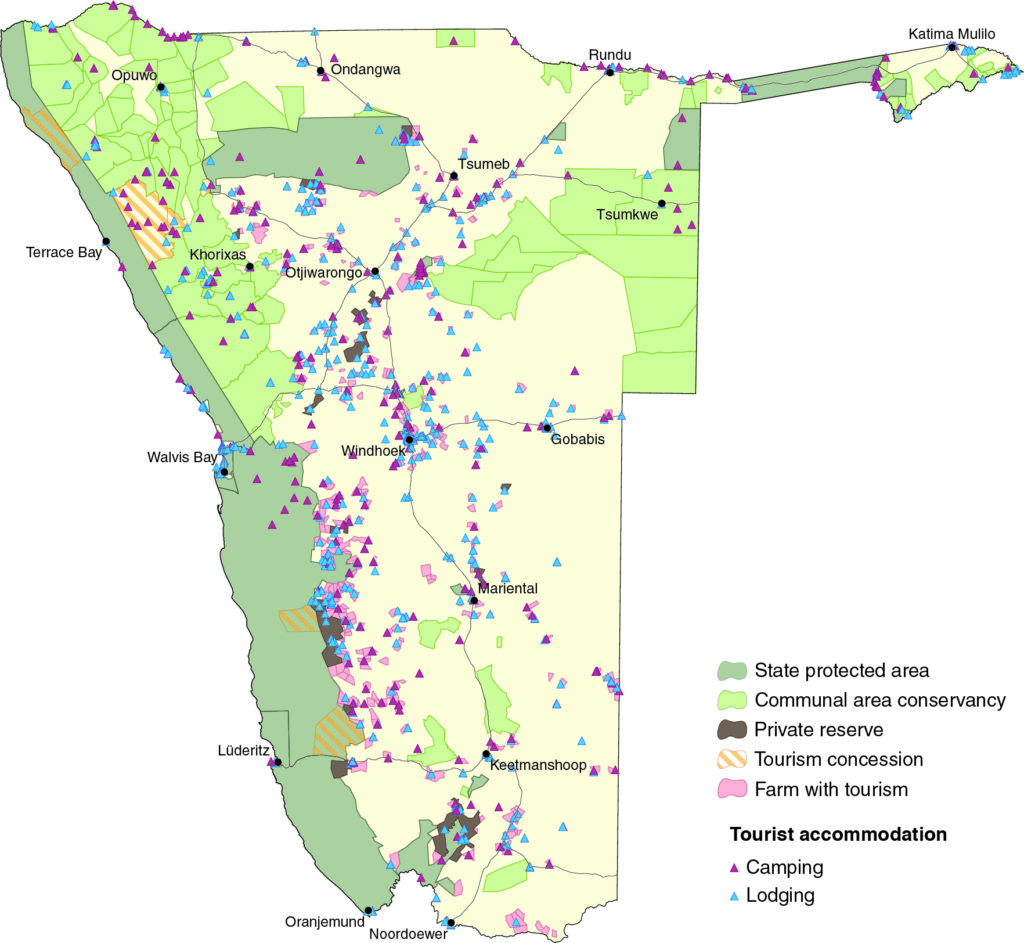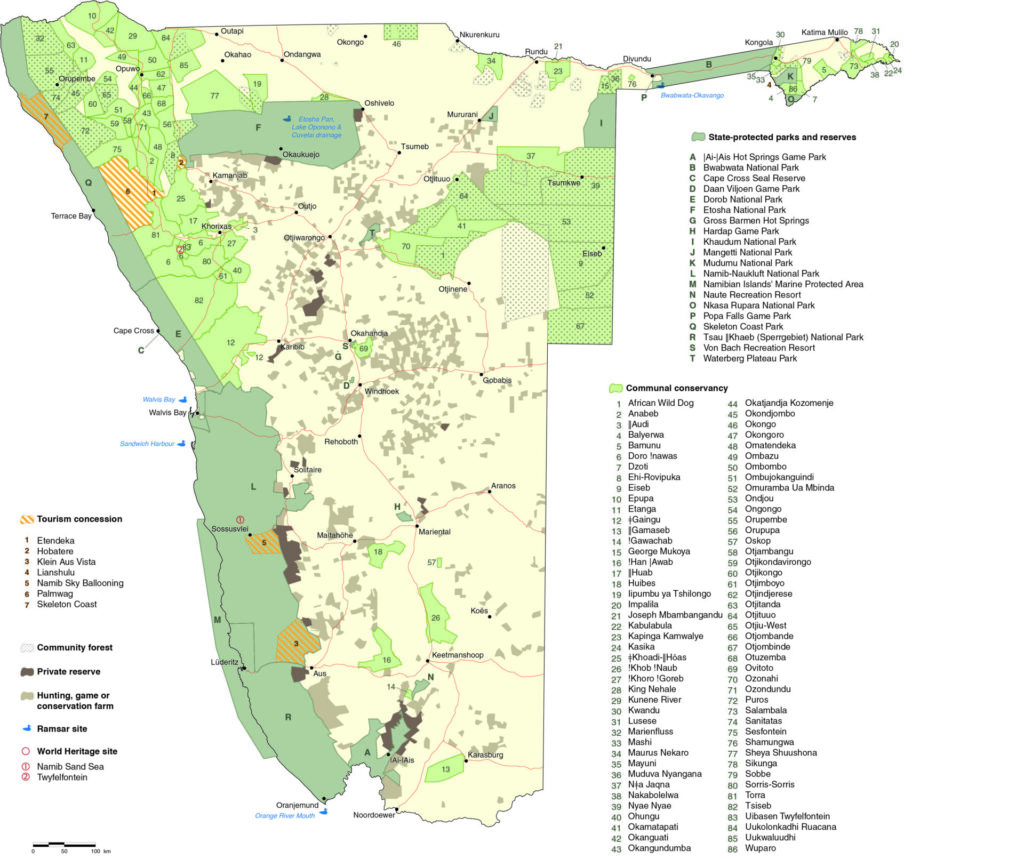The Online Guide to the Namibian Economy
The Online Guide to the
Namibian Economy

Powered by
The Online Guide to the
Namibian Economy
Powered by

Tourism
Namibia is a large, sparsely populated and beautiful country blessed with breath-taking landscapes and abundant wildlife including Africa’s Big Five and cheetahs which form the basis of a diverse and innovative tourist industry. This industry caters to a wide variety of tastes from high-end fly-in safari tourism to self-drive tourists and backpackers. Namibia has 20 state-run protected areas covering about 18% of the country’s land area including three trans-frontier parks. Prior to Covid in 2019, Namibia attracted almost 1.6 million tourists, 1.2 million from Africa (mostly Angola and South Africa), 256,000 from Europe, and 89,000 from the rest of the world.

Ministry of Environment and Tourism and Other Public Agencies
The Ministry of Environment, Forestry and Tourism is the key policy-making institution for the industry headed by the Minister of Environment, Forestry and Tourism, since March 2025 the Honourable Indileni Daniel. Tourism is the responsibility of the Directorate of Tourism and Gaming. There has been no explicit tourism policy since the National Policy Framework on Tourism for Namibia of 2009. Regulation of tourism accommodation and operators is carried out by the Namibia Tourism Board financed out of levies on the industry. Government is directly involved in the industry through a commercial public enterprise Namibia Wildlife Resorts which owns and operates 22 tourist resorts and camping sites around the country. For historical reasons, Government owns a number of other tourist facilities including the Windhoek Country Club and the Swakopmund Hotel and Entertainment Complex. The Ministry publishes annual tourism arrival statistics and also periodic tourism satellite accounts which quantify the tourist industry’s direct and indirect contribution to the economy.
Private Sector and Community-Based Tourism
The vast majority of Namibia’s private tourist companies are small, individually or family-owned businesses. Accommodation establishments ranging from campsites, self-catering and B&Bs to guest farms, guesthouses and hotels make up the largest share of tourist businesses. The rest of the industry consists of vehicle rental operators, tour and safari operators, trophy hunting operators, tour facilitators, shuttle and transport operators, conference centres, booking agents, air charter operators and activity operators. Larger Namibian tourism businesses include Gondwana, the Ohlthaver & List Group and NamibRand Nature Reserve.
Namibia has been a pioneer in community-based tourism. The Namibian Association of Community-based National Resource Management Support Organisation (NACSO) puts the number of communal conservancies at 86 covering an area of 169,756 square kilometres and involving 223,000 people. Namibia also has 43 registered community forests covering 72,537 square kilometres. Community-based tourism activities include hunting, crafts, campsites, trophy hunting and joint-venture tourism.
Source: Atlas of Namibia 2022
Source: Atlas of Namibia 2022

